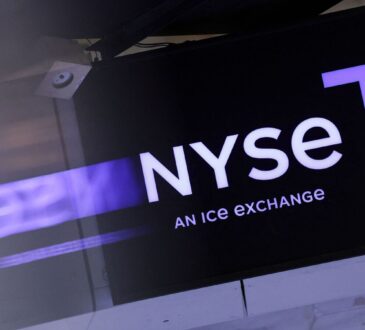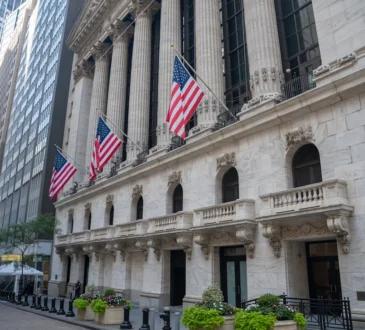Indian stock market: Can Q2 results 2025 alone drive Sensex, Nifty 50 to record highs despite no India-US trade deal?

The Q2 results of Indian corporates have broadly met expectations so far, reinforcing market sentiment. The Indian stock market posted strong gains in October, with benchmark indices Sensex and Nifty 50 rising 4.6% and 4.5%, respectively, last month, supported by in-line earnings, easing FII selling, and optimism around India–US trade talks.
The Sensex and the Nifty 50 are inching closer to their record high levels of 85,978.25 and 26,277.35, respectively, which they scaled on September 27 last year. On Monday, November 3, the Sensex rose over 100 points, or 0.10%, to an intraday high of 84,052, while the Nifty 50 climbed by 0.20% to an intraday high of 25,773.
Q2 results 2025: Largely in line with expectations
The July-September quarter earnings of India Inc. have been stable, without any major negative surprises. This seems to have offered some comfort to the domestic market.
According to brokerage firm Motilal Oswal Financial Services, as of October 31, 27 Nifty 50 companies have announced their Q2FY26 results.
“The Q2FY26 earnings have generally been in line, with the intensity of earnings cuts moderating. Although Indian equities have registered a lacklustre performance over the past year, we continue to highlight that the Indian markets now appear to be in a healthy state versus last year,” said Motilal Oswal.
The brokerage firm believes that the earnings cycle is bottoming out, and earnings growth could accelerate into double digits.
Motilal underscored that the earnings of these 27 Nifty companies have grown 5% year-on-year (YoY) versus the estimated +6% YoY, driven by HDFC Bank, Reliance Industries, TCS, JSW Steel, and Infosys.
These five companies contributed 122% to the incremental YoY accretion in earnings. Seven companies within the Nifty reported lower-than-expected profits, while five recorded a beat, and fifteen registered in-line results, Motilal Oswal said.
“The Nifty EPS (earnings per share) for FY26E was raised marginally to ₹1,101 from ₹1,096 due to upgrades in HDFC Bank, Tata Steel, Ultratech Cement, Dr Reddy’s Labs, and Shriram Finance. The FY27E EPS was raised by 0.3% to ₹1,278 from ₹1,274,” said Motilal.
Can earnings alone drive the Indian stock market to record highs?
The domestic market is at a crossroads. On one hand, a healthy domestic macro backdrop suggests that equities could be poised for strong growth. On the other hand, persistent concerns over US tariffs and foreign capital outflows are weighing on sentiment.
Experts say the domestic market needs a confluence of positive triggers to hit unprecedented levels and sustain its gains.
A favourable India–US trade deal could dispel the clouds of macroeconomic uncertainty and trigger a fresh wave of foreign capital inflows, potentially resulting in a sharp upside in the market. However, earnings remain the most important driver, as they will provide valuation comfort and help the market sustain its gains.
Experts hope that the US-India deal could be announced soon, as there have been positive signals from both sides in the recent past.
Experts say the US cannot politically afford to push India closer to Russia and China, creating a strong alliance against Western interests.
“On the trade front, look at the pattern. The US imposed aggressive tariffs on India earlier, but since then, there has been no renewed aggression — even though the US has continued taking strong positions against China. After India’s diplomatic engagements with Russia and China, it appears the US is cautious. This geopolitical logic gives me confidence that, although delayed, a trade deal is likely eventually,” G Chokkalingam, the founder and the head of research at Equinomics Research Private Limited, pointed out.
On earnings, Chokkalingam believes Q3 will be a bigger driver for markets than Q2.
“Q3 should reflect the full impact of the GST rate cuts, strong monsoon, and improved water storage that boosts agricultural output. Additionally, the wedding season expenditure — estimated at around ₹6.5 trillion — and declining oil prices support demand. So, Q3 earnings expectations should drive the market,” said Chokkalingam.
Experts express optimism about the market’s prospects Q3 onwards.
Chokkalingam pointed out that the US accounts for around 20% of India’s total exports. But this impact won’t hit all listed companies equally. For example, jewellery and certain textile companies aren’t fully represented in the listed space. So the tariff impact would be concentrated in specific sectors and companies rather than the entire market.
“Domestic demand should more than compensate for any temporary export-related softness. While affected sectors may face pressure, stronger segments of the market can still pull indices higher,” said Chokkalingam.
Earnings recovery can support the market, but without a trade deal, upside may be limited and the Nifty 50 may struggle to breach 26,500–27,000 sustainably.
VK Vijayakumar, chief investment strategist at Geojit Investments Limited, pointed out that the US–China deal is only a temporary truce — a one-year pause — not a full agreement. So it’s too early to draw conclusions. In fact, this temporary pause means the US may again act tough on India.
“The tariff reduction on China was only marginal. Therefore, expecting the US to remove penal tariffs on India or cut duties sharply is not guaranteed. That uncertainty remains,” Vijayakumar said.
Earnings recovery can compensate for valuations, but the market still needs data to confirm this.
The festive-season sales have been stronger than expected, and government stimulus is working. However, Vijayakumar emphasised that we need to see whether this momentum sustains beyond November–December.
“Only the data over the next two months will confirm that and give a boost to market sentiment,” said Vijayakumar.
Read all market-related news here
Read more stories by Nishant Kumar
Disclaimer: This story is for educational purposes only. The views and recommendations expressed are those of individual analysts or broking firms, not Mint. We advise investors to consult with certified experts before making any investment decisions, as market conditions can change rapidly and circumstances may vary.



